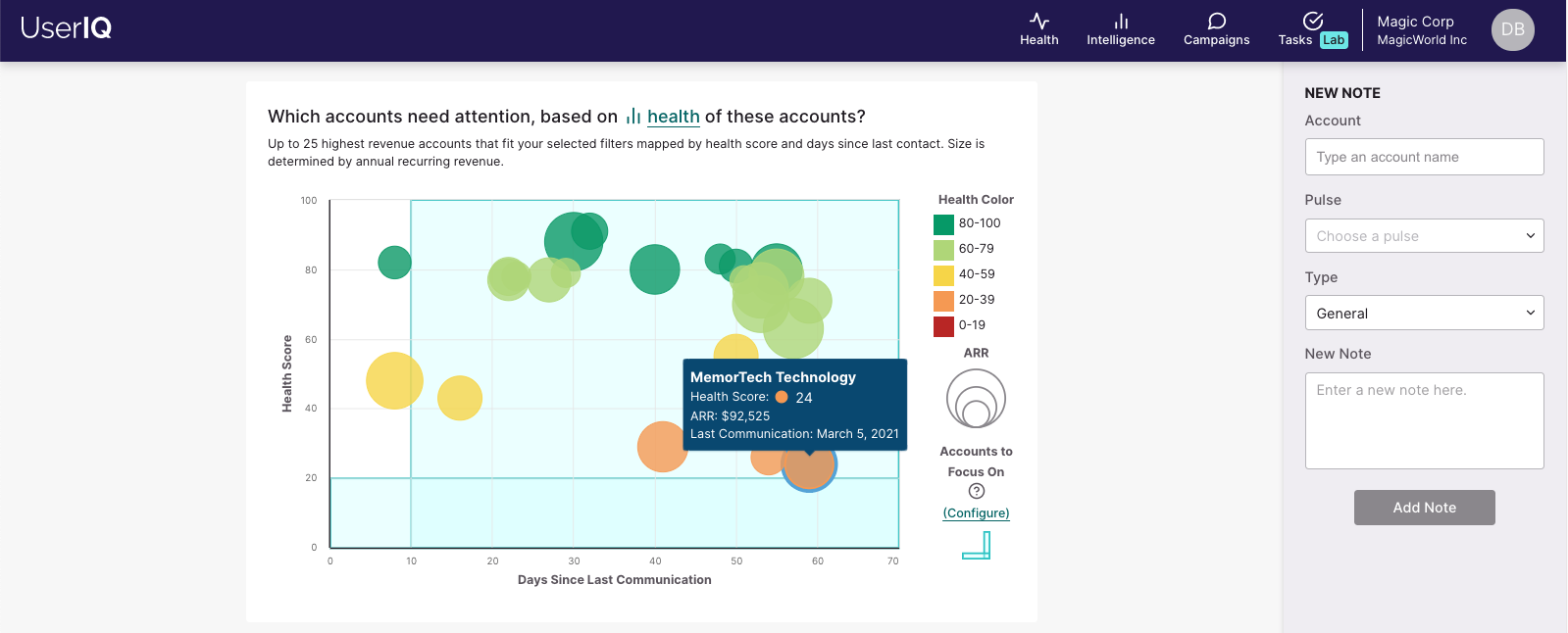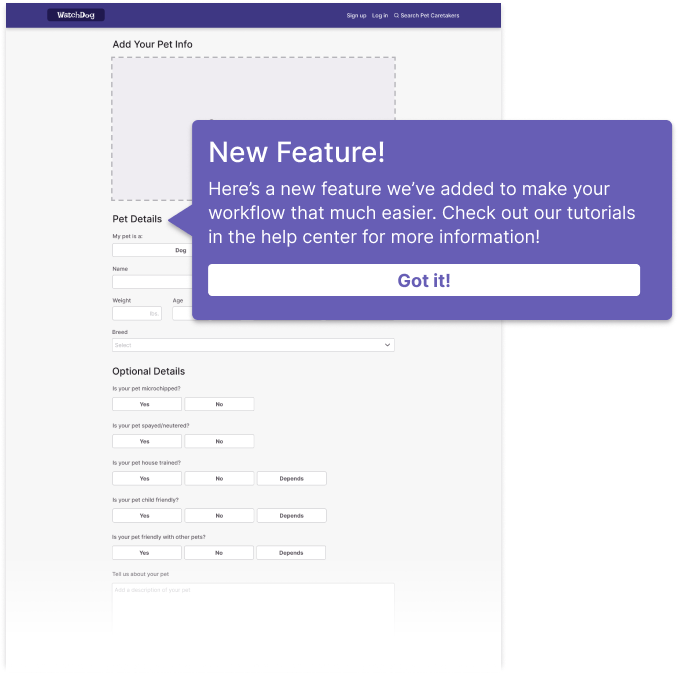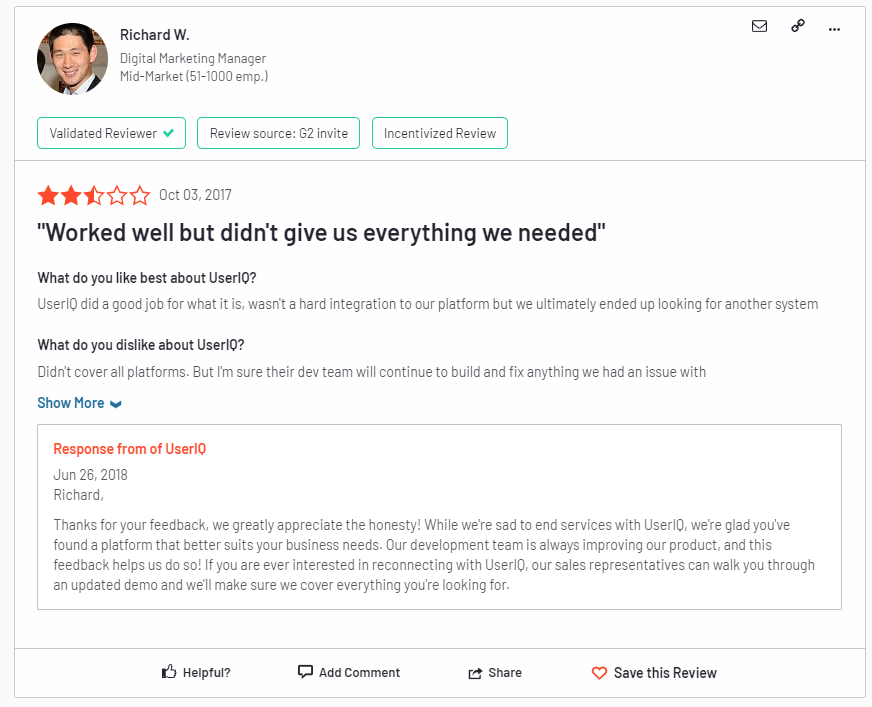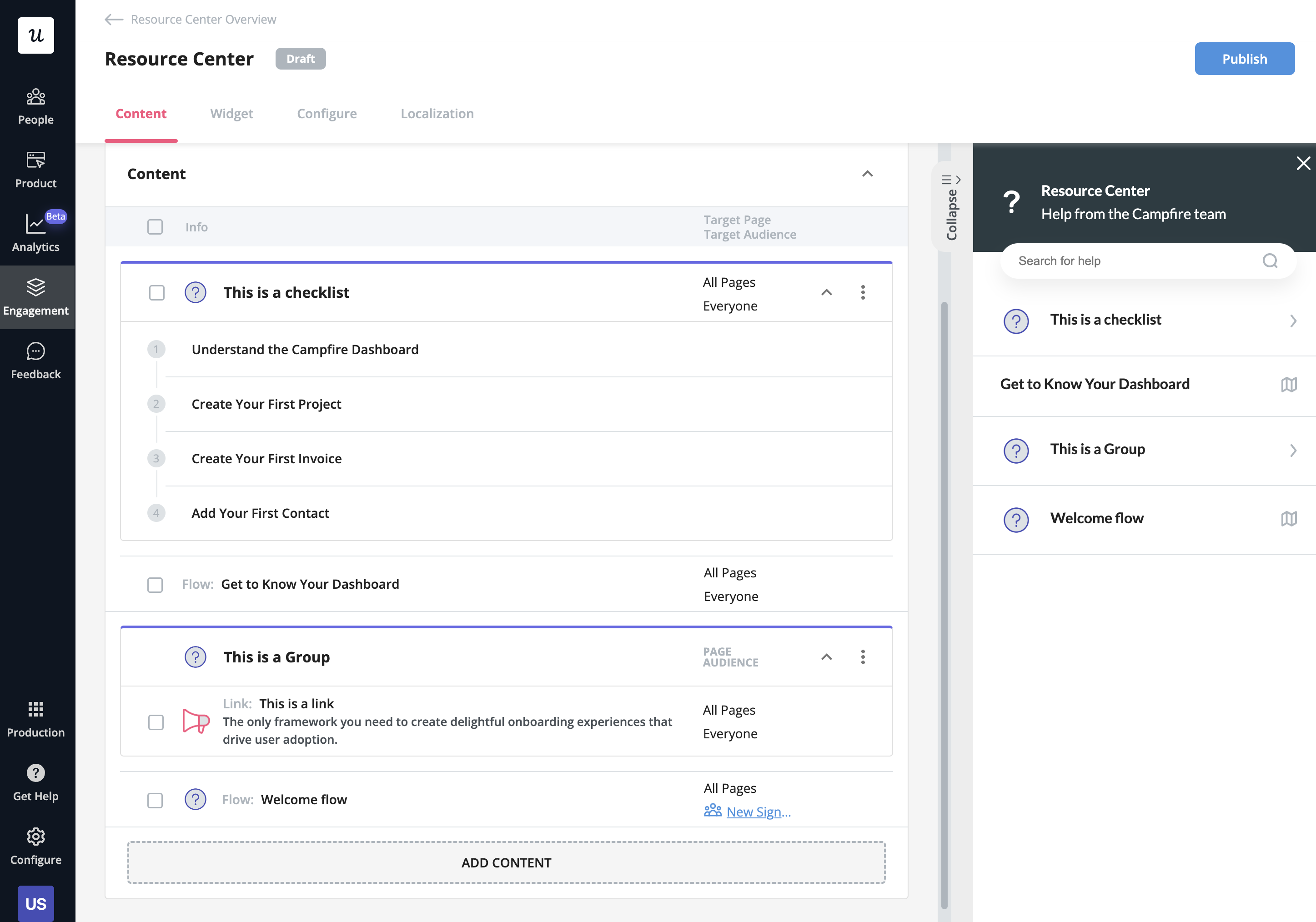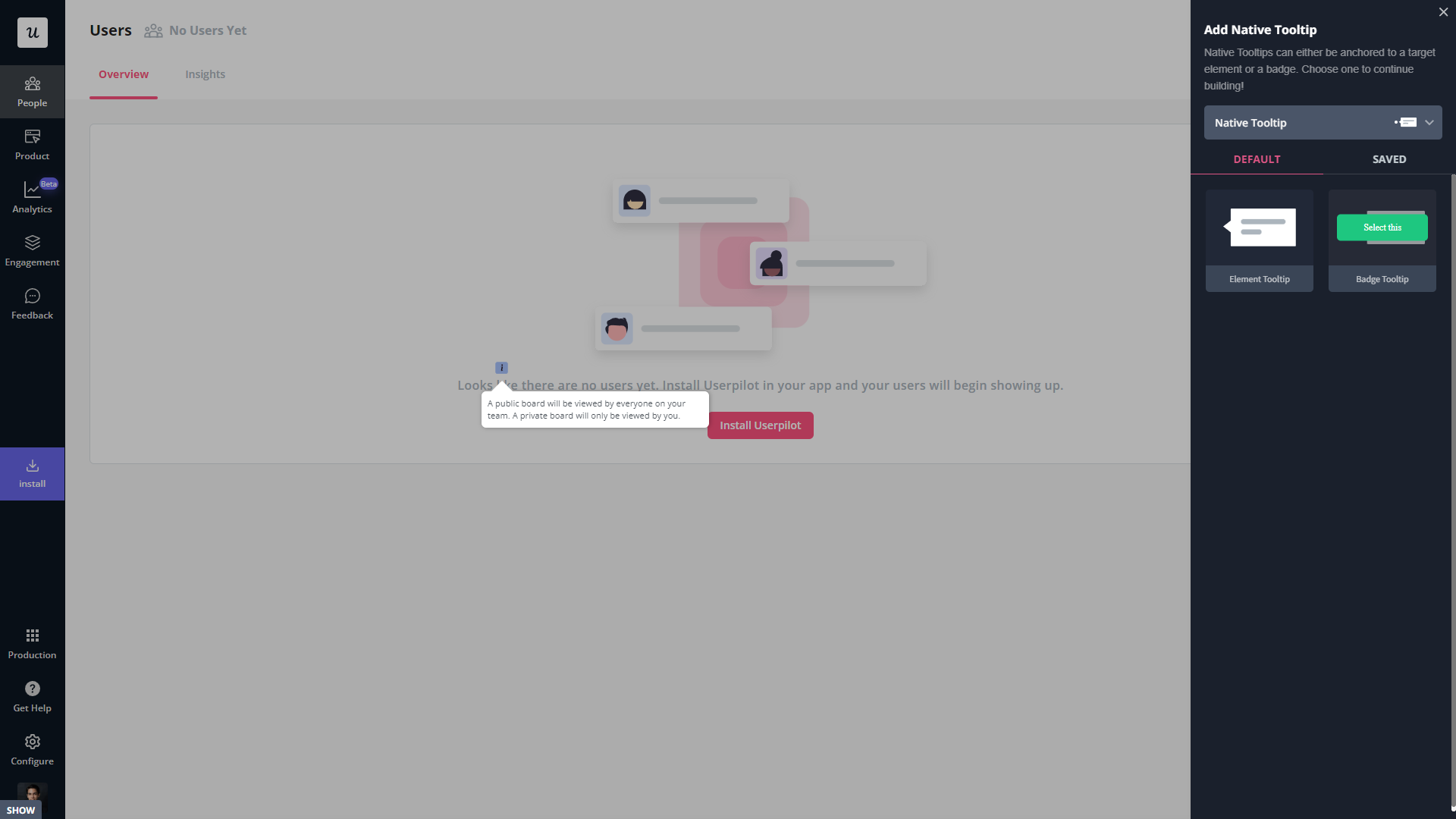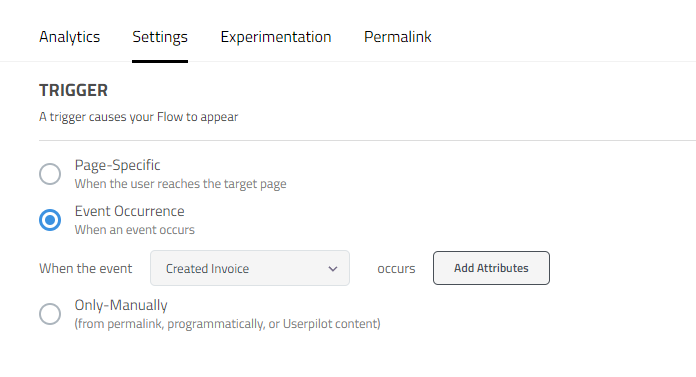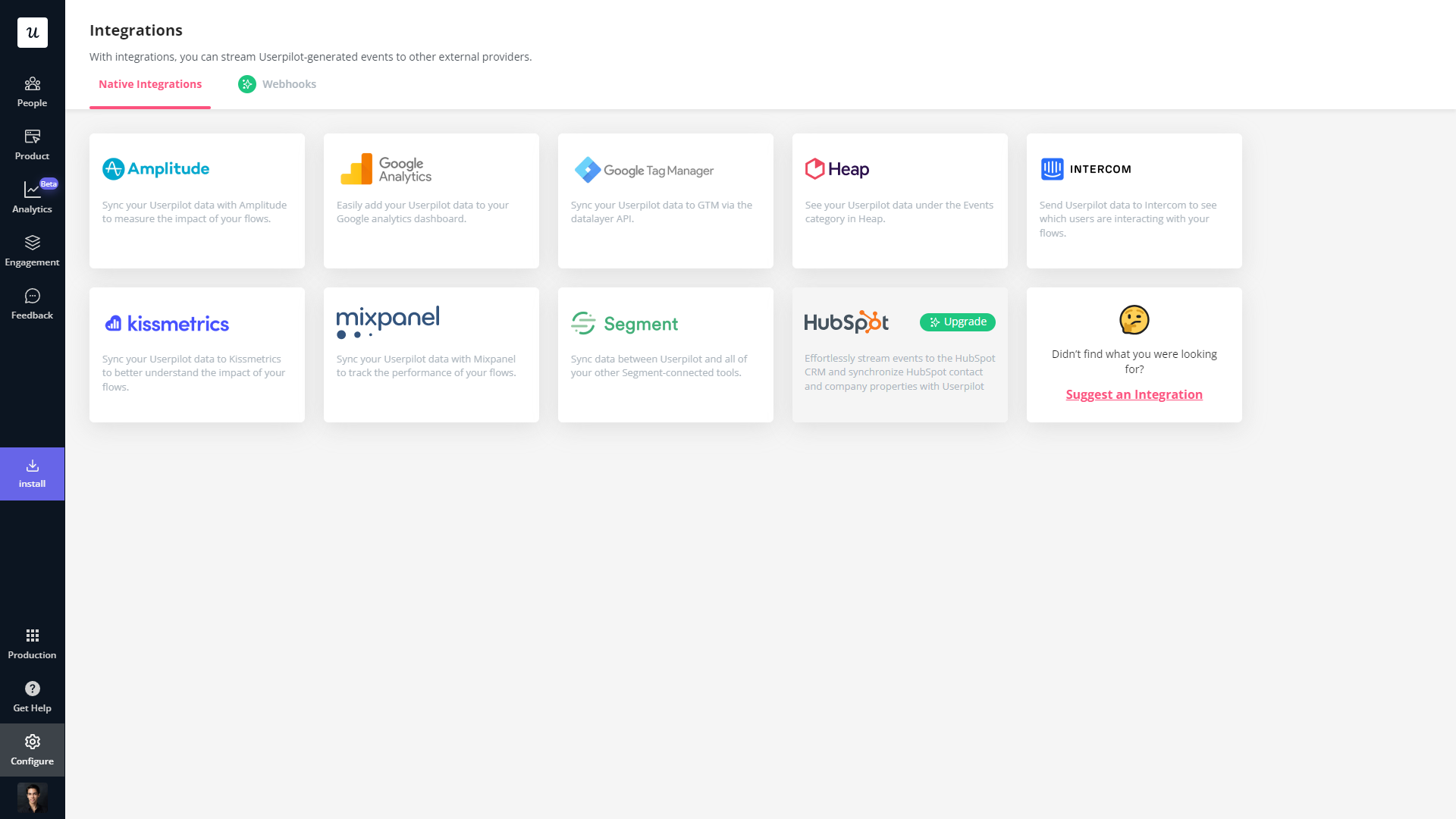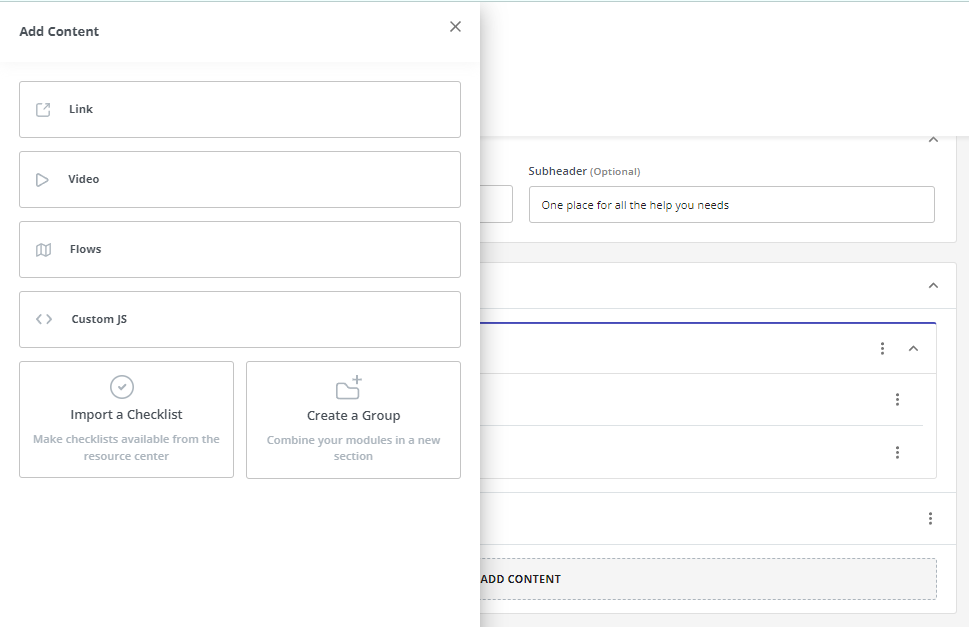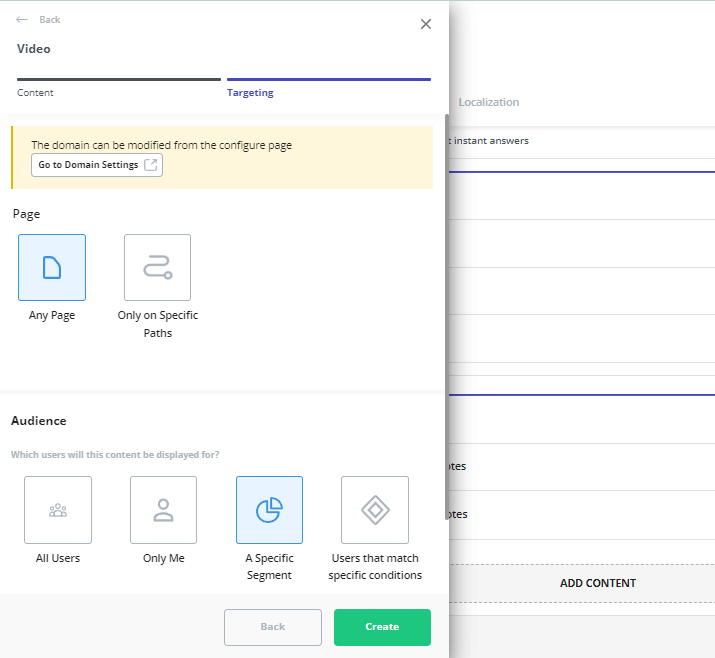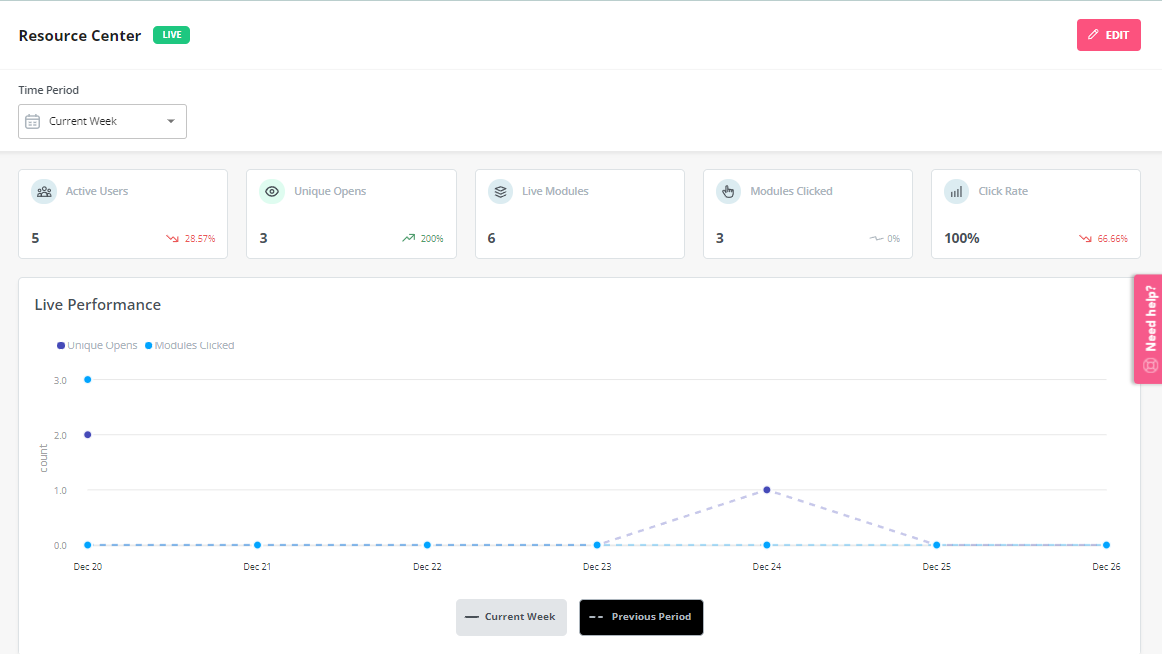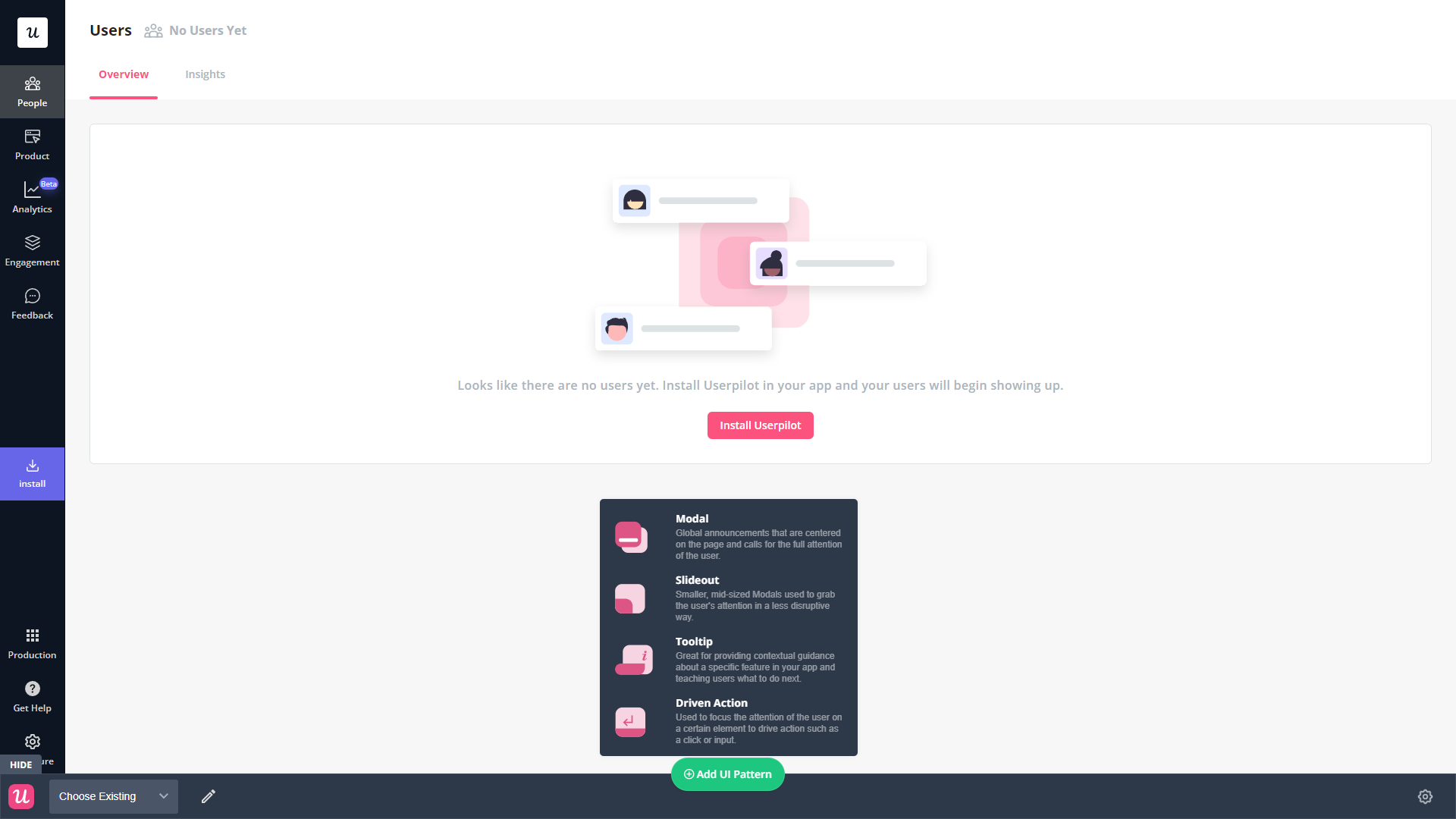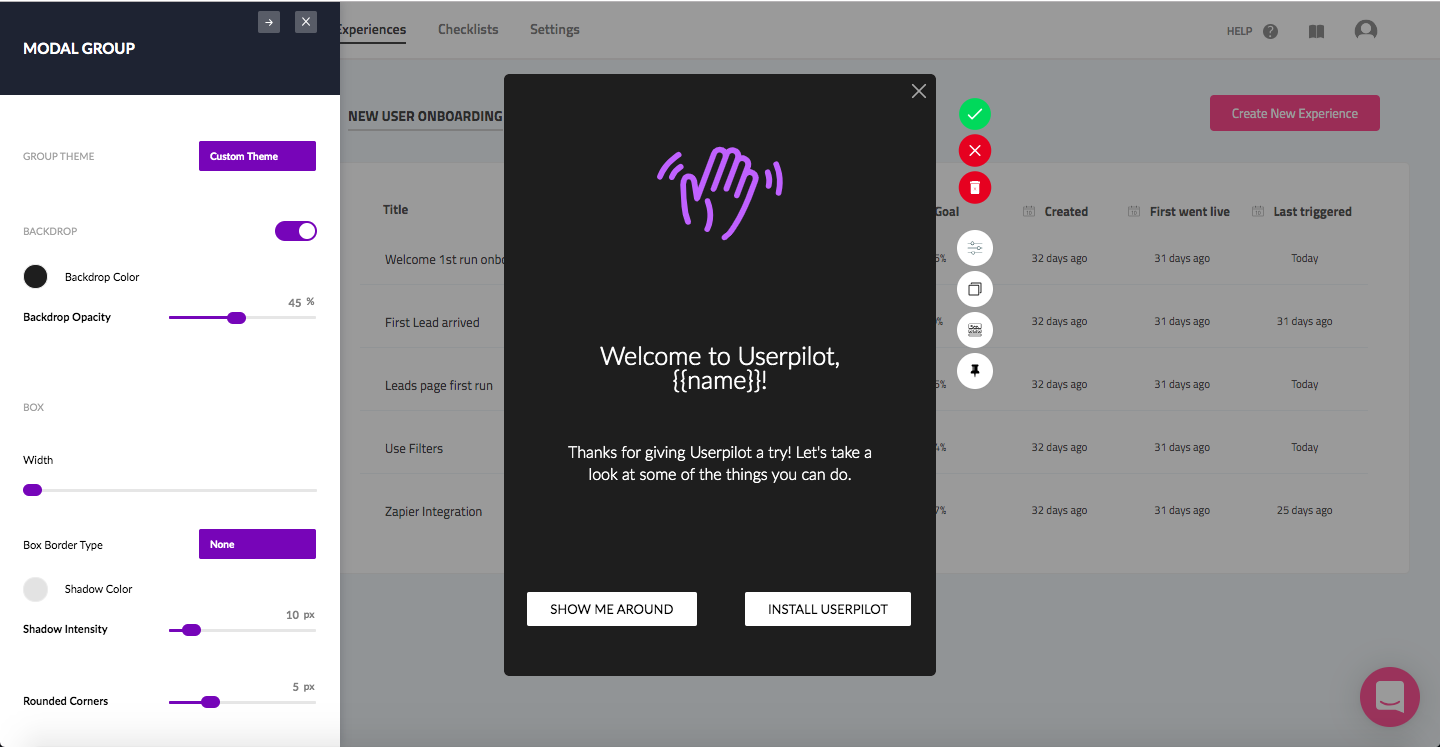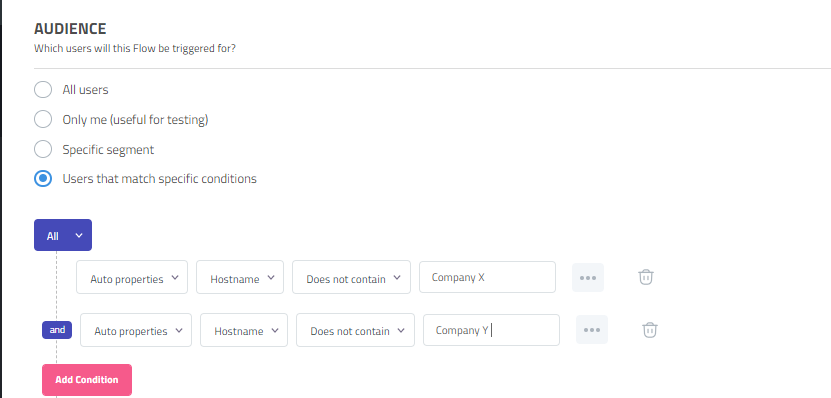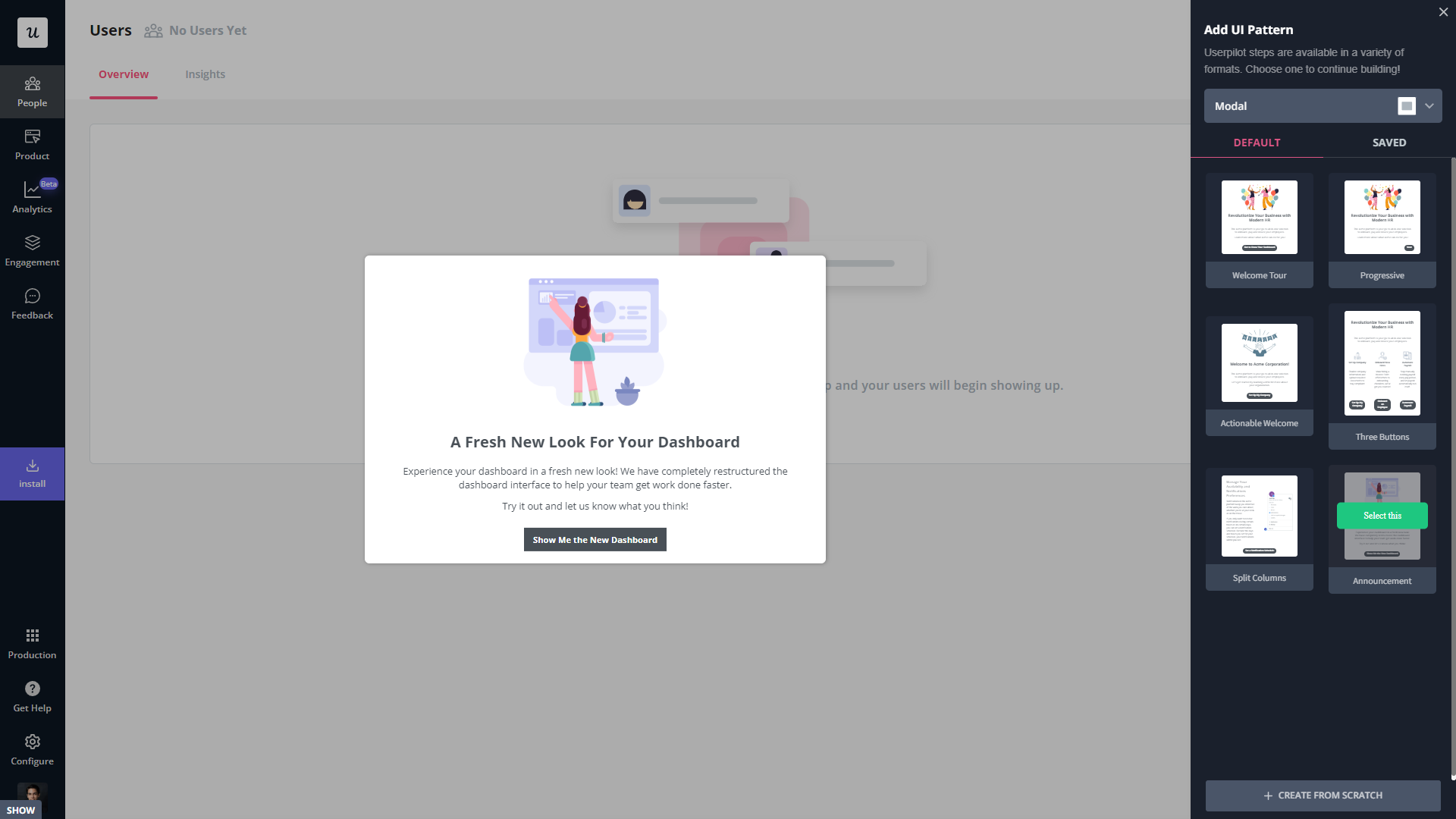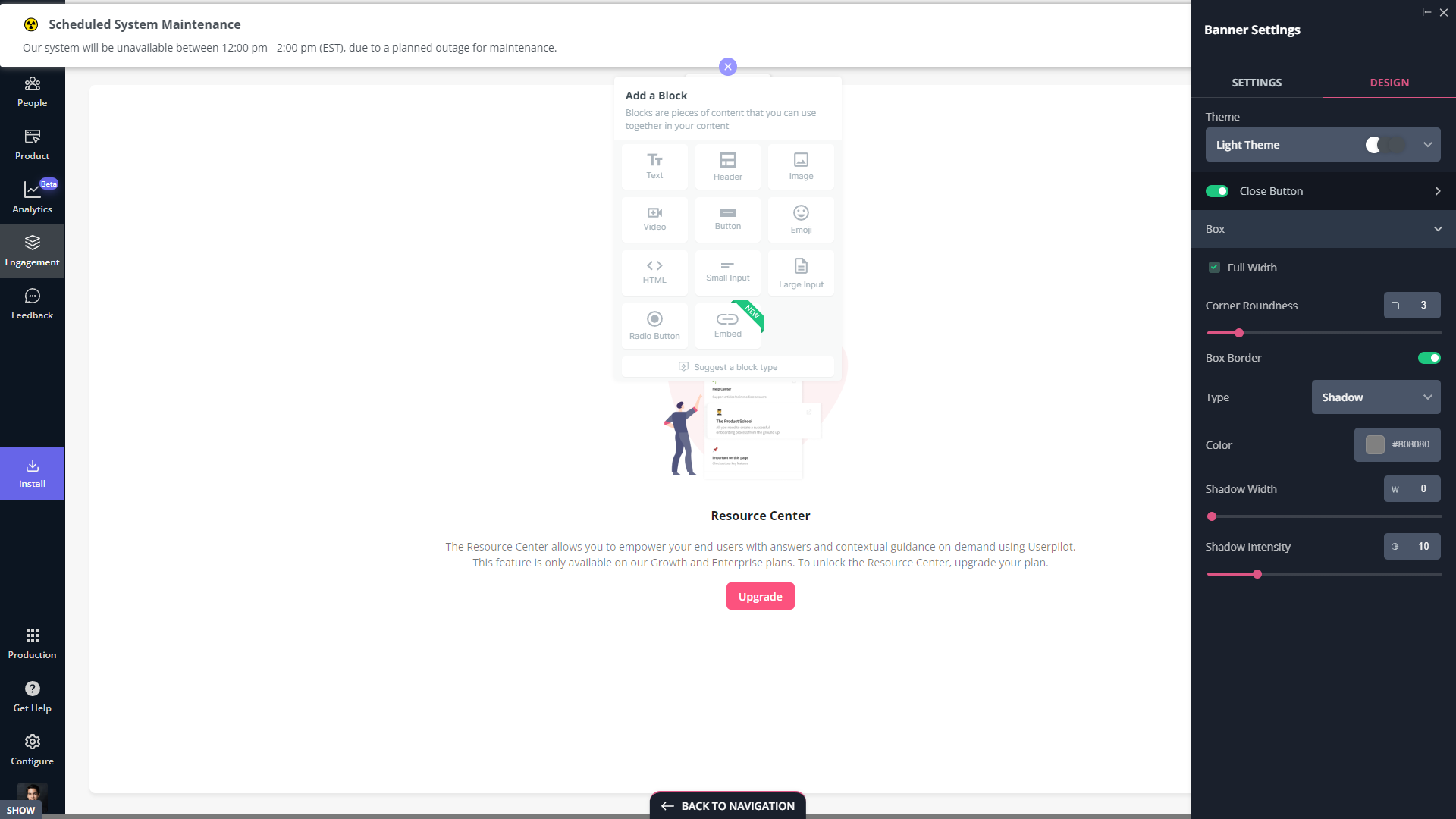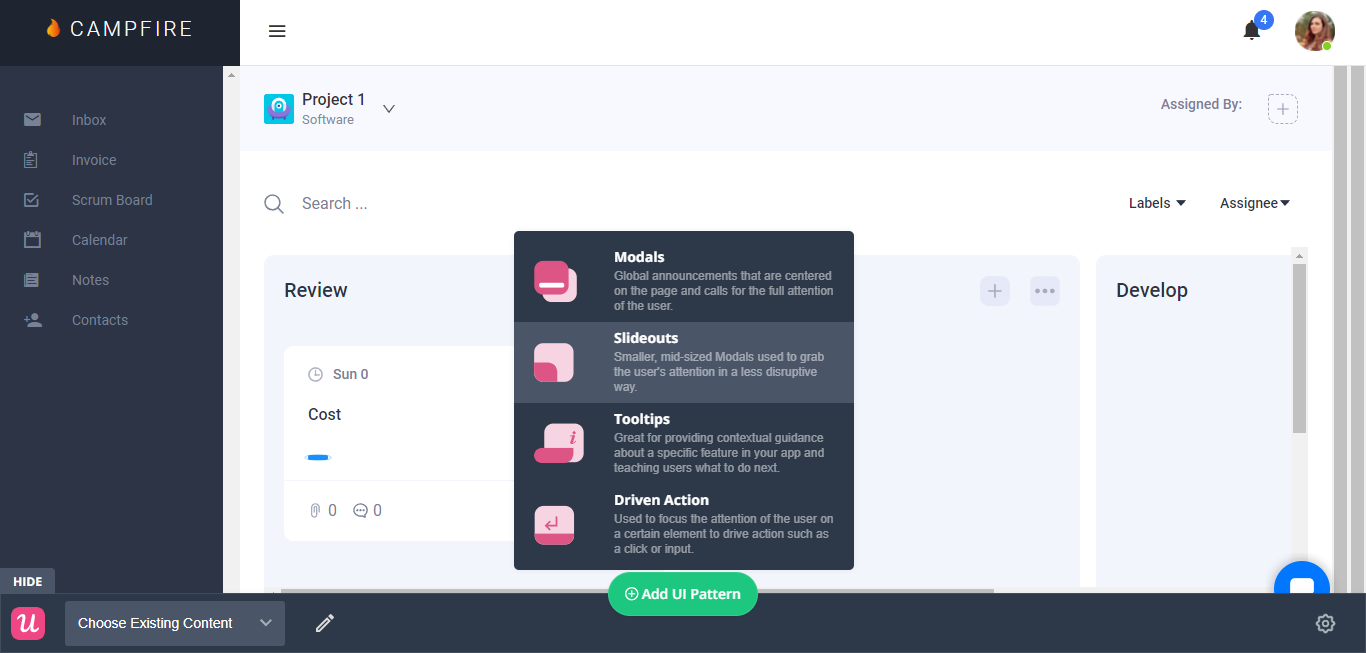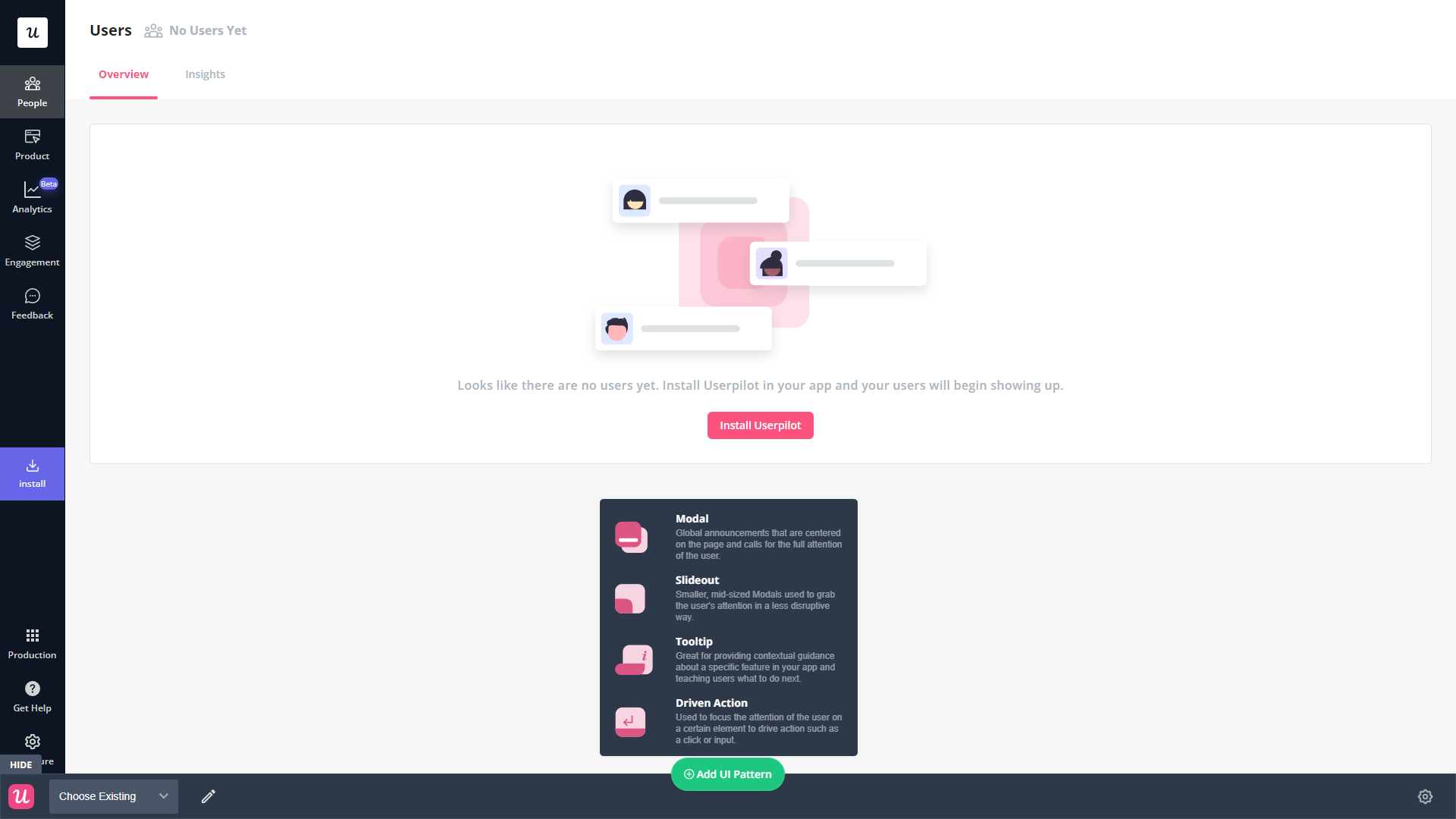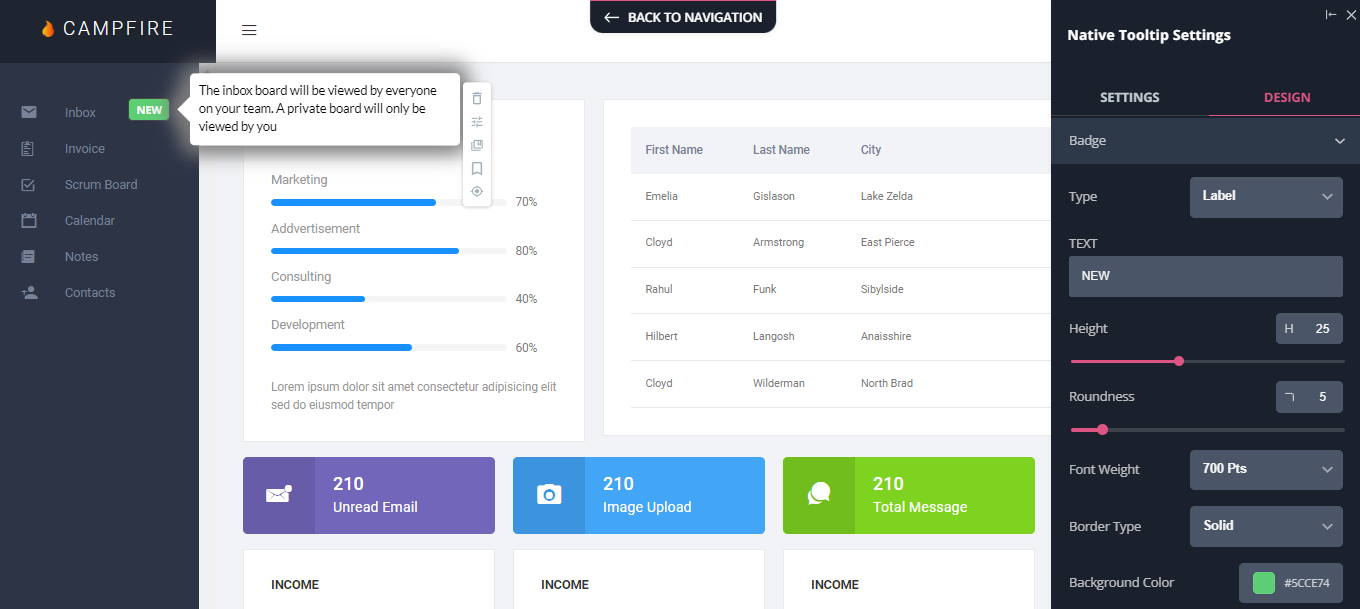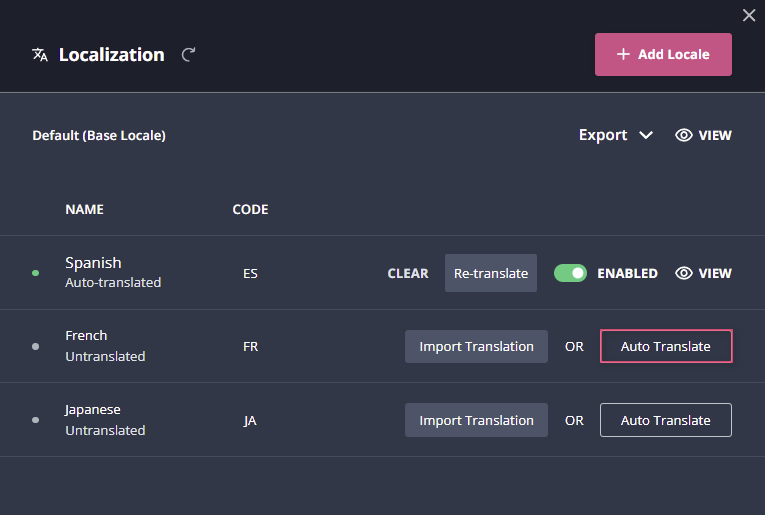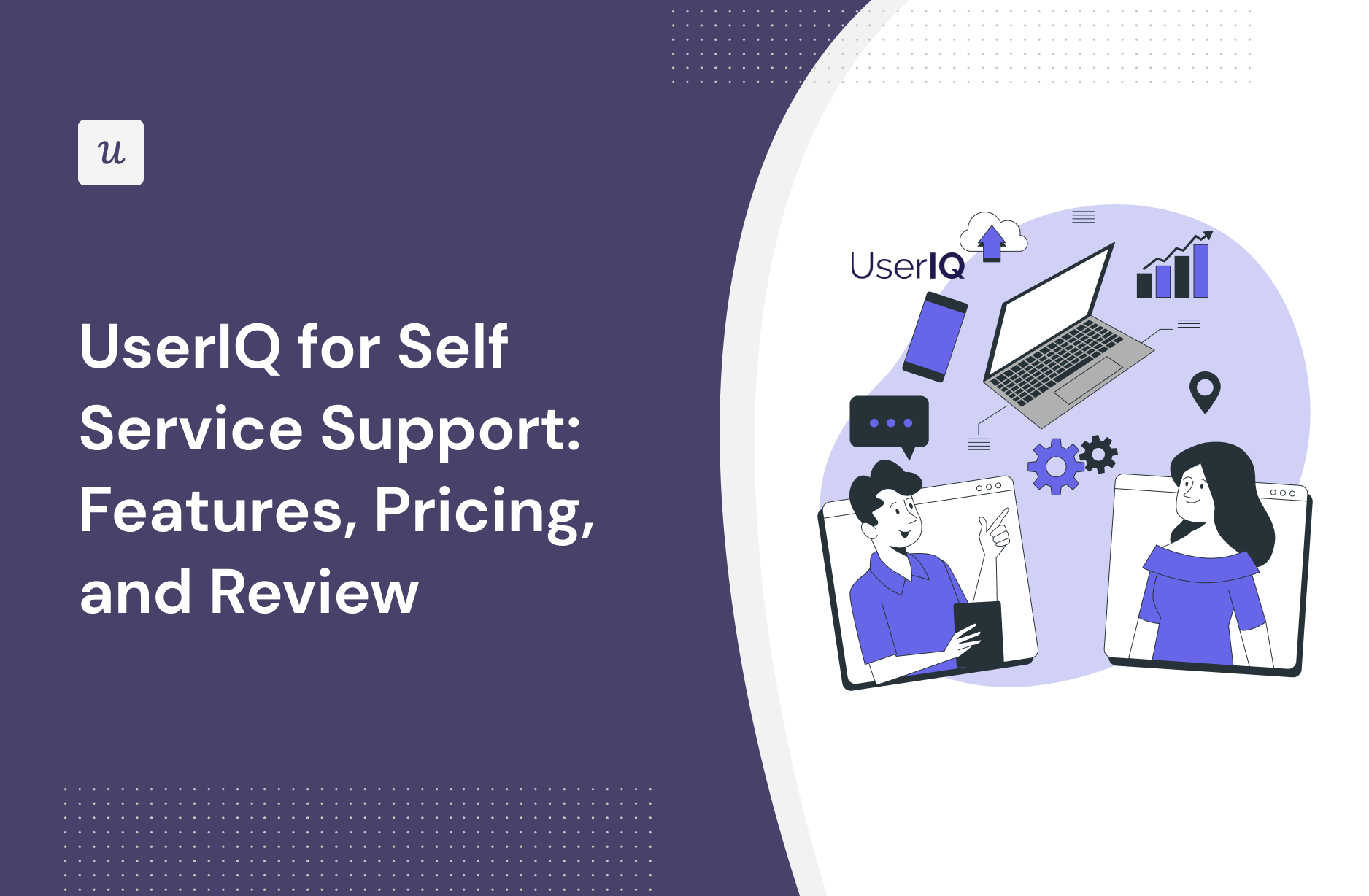
Looking for an effective self service support tool and wondering if UserIQ is the best option for your SaaS company?
With numerous UserIQ alternatives, it can be challenging to make a final decision.
In this article, we’ll delve into precisely that – helping you determine whether UserIQ is the ideal choice for your self service support needs. We’ll explore its features, pricing, and offer a comprehensive review to aid in your decision-making process.
Let’s get started!
Try Userpilot Now
See Why 1,000+ Teams Choose Userpilot

TL;DR
- UserIQ is a good choice for self service support and it comes with features such as in-app resource center, interactive walkthroughs, in-app announcements, and tooltips.
- Here are three succinct reasons why you might consider an alternative to UserIQ:
-
- Budget Constraints: If you’re operating on a tight budget, alternatives may offer more cost-effective pricing options, making them a better fit for small startups or businesses with limited resources.
- Onboarding Tour Limitations: If you are looking for features like onboarding checklists and more comprehensive product guide functionality, you might consider using a tool like Userpilot.
- No Free Trial: Most SaaS product teams might want to experiment with a tool before swiping a card for it. UserIQ doesn’t offer a free trial so you can’t test it before making a decision.
- If you’re looking for a better option for self service support, Userpilot exceeds both functionality and value for money compared to UserIQ.
- Ready to see Userpilot in action? Schedule a demo today to explore its powerful self service support capabilities firsthand.
Looking for a Better Alternative for Self Service Support? Try Userpilot

What is UserIQ?
UserIQ is a customer success platform that helps uncover health insights, predict user hurdles, and simplify account management.
In addition, UserIQ poses features like a customer health dashboard, product intelligence, plays, and in-app engagements such as user onboarding tours. These features help you predict user behavior, act on it, and create winning experiences.
According to online resources, UserIQ, a tool that was widely utilized by many startups to enhance their customer success initiatives, ceased its operations on May 10, 2022. Despite its shutdown, the company’s online presence remains, allowing us to gather information about its features and functionality.
Must have features of self service support tools
Here are some important factors to consider while choosing self-serve support tools:
- Ability to build different help content formats, including articles, videos, surveys, checklists, and links to add to your help center.
- The feature that triggers personalized modules for different user segments – helping users to find relevant information quickly.
- The option to customize your self-serve portals to match your brand’s branding, i.e., color palette, style, and fonts.
- Translation and localization – to make the content accessible in different languages and places to reach a wider audience.
- Trigger in-app messages based on specific events, in-app behaviors, and the user’s stage in the journey.
UserIQ features for self service support
In-app support in SaaS refers to the service features that customers can use to receive help directly within the product interface besides connecting with your customer service team.
- Tooltips: With UserIQ tooltips, you can provide your users with insights about new features of your product. It’s so easy to create custom segments and send branded feature tips. After installing the tracking snippet, go to UserIQ Engagements, and you’ll reach customers in the app in minutes flat.
- Onboarding Tours: With UserIQ, you won’t need any of that to set up intuitive product tours. This high-tech solution allows you to build targeted, step-by-step usage guides that can be accessed on-demand.
However, UserIQ doesn’t provide a resource center, essential for providing in-app support.
Userpilot is the most powerful customer support software for SaaS companies that want to build personalized and robust in-app support systems without coding. Book a demo to learn more.
UserIQ’s in-app resource center
An in-app resource center is a space where users can find educational content and help articles within the application itself.
A high-value resource center features a variety of content, including product documentation, product announcements, customer support functions, feedback options, and educational resources.
UserIQ does not have an in-app resource center. If you want a tool with an in-app resource center, check out Userpilot. Userpilot has a comprehensive resource center with different module types catering to user segments. It also features a variety of content formats, including videos, product documents, articles, and more.
UserIQ’s interactive walkthroughs
UserIQ does not offer interactive walkthroughs. You can only create static tours with it.
Building a walkthrough using a dedicated tool like Userpilot is much easier than coding it from scratch. The best walkthrough software on the market is Userpilot.
Where Userpilot excels is through the level of personalization it allows in your walkthroughs. Whatever UI element you want to build, whether it’s a tooltip, a slider, a modal, or anything else, Userpilot will let you do it in just a few clicks.
UserIQ’s in-app announcements
New feature announcements are necessary if your users want to know what updates or new releases exist within your product. This is crucial as it helps drive them to feature adoption quicker.
Here are the in-app announcements features available on UserIQ:
- In-app messaging for getting voice customer feedback.
- Self-service support via onboarding guides.
- Feature tip announcements through the tooltips feature.
Other features include segmenting different users and using UI/UX patterns to communicate better. With Userpilot, you can survey your customers about their preferred new features, create different UI/UX patterns, and segment your audience to deliver the right message at the right time. Book a demo to try Userpilot today!
UserIQ’s tooltips
UserIQ can create tooltips, guiding users to discover untapped features effortlessly.
Even though its functionality for this use case is limited, it still offers some basic features like:
- Creating customized segments for targeted feature tips.
- Delivering branded tooltips to your users in minutes, enhancing their in-app experience, and promoting feature adoption.
Looking for more features? Leverage a no-code tool like Userpilot to create, customize, trigger, and A/B test all the tooltips you want without relying on devs or technical skills. With access to modern templates and great compatibility with your current tech stack.
What are the pros and cons of UserIQ?
UserIQ’s pros
UserIQ aims at improving the health usage of customers on your product. Here’s a list of the amazing features it offers:
- Easy In-App Feedback Collection: UserIQ makes creating micro-surveys within your application easy, enabling you to gather instant feedback from your users. This can be invaluable for understanding user needs and improving your product.
- Customer Health Score Dashboard: UserIQ provides a Customer Health Score dashboard, which helps you assess churn liability. This feature allows you to identify at-risk customers and take action to retain them proactively.
- Onboarding Improvement: UserIQ offers simple walkthroughs that can enhance the onboarding experience for your users.
- Extensive Third-Party Integrations: UserIQ supports a wide range of third-party software integrations, enabling you to centralize your data in one location.
UserIQ’s cons
UserIQ has some great features. However, there are still some loopholes:
- Performance Issues: Bugs and performance issues keep repeating, and the support system is low compared to other tools. There is no availability of a knowledge base documentation on how to use some features.
- Limited UI Patterns: Some of the UI patterns, like hotspots and tooltips, aren’t as functional as users might like. Offers only interactive walkthroughs, known as lanes.
- Doesn’t Support Chrome Extension: Works only in the dashboard and can’t be launched in a Chrome extension.
What do users say about UserIQ?
“Bringing Insights Like We Never Had Before!”, Game changer, simple and easy to use — these and many more phrases are used by UserIQ customers to describe the excellent benefits of the product.
The UserIQ platform is an easy-to-use tool that doesn’t require a lot of time or a dedicated admin to provide value. The customer success team is friendly and attentive and is always willing to assist with any issues we may have. Specifically, the health score dashboard gives us an easy-to-understand overview of the health of our customers but also allows us to drill down using a variety of filters to see specific issues that need to be addressed.
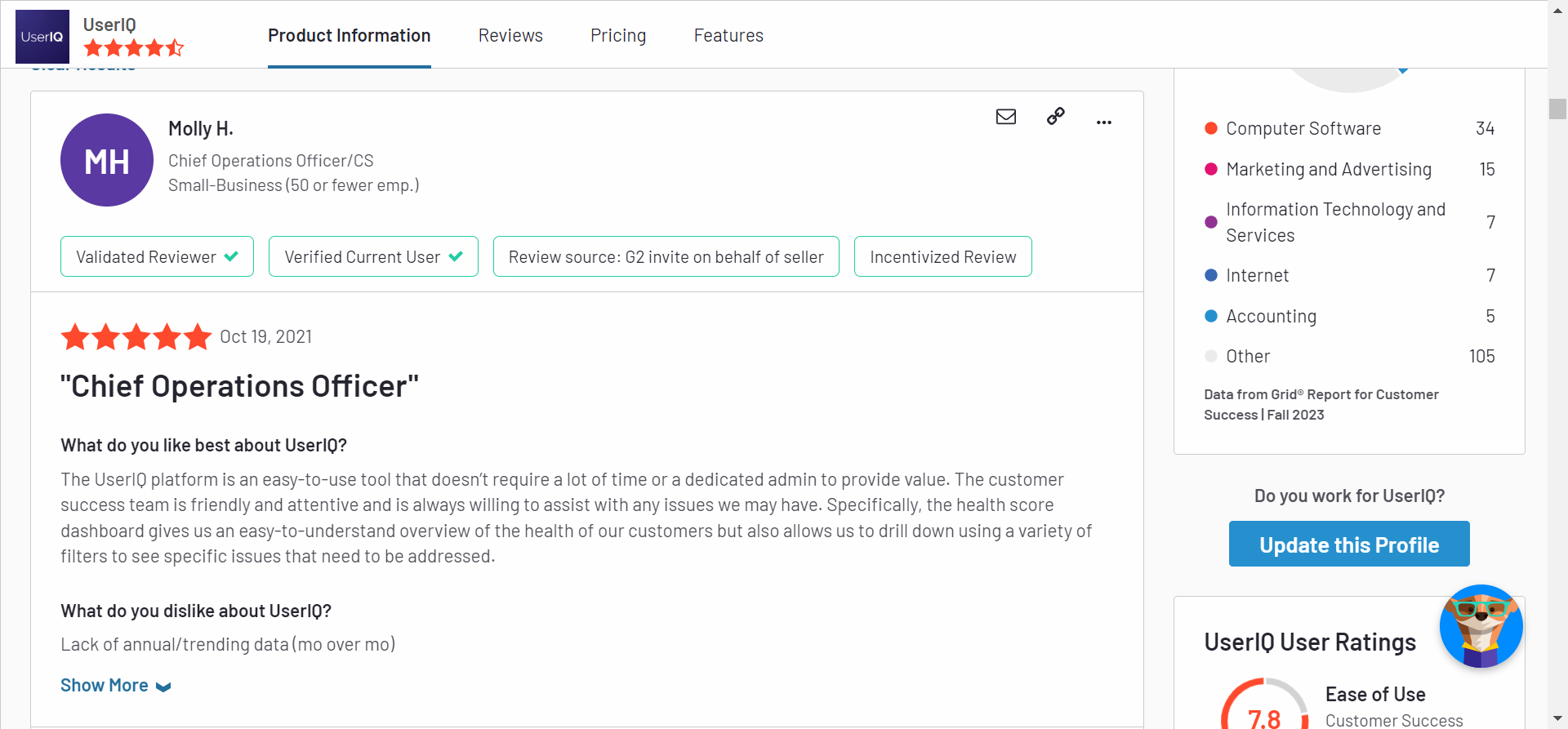
UserIQ did a good job for what it is, wasn’t a hard integration to our platform but we ultimately ended up looking for another system.
UserIQ’s pricing
From some observations and per G2, UserIQ has not provided pricing information for this product or service. This is a not-so-good common practice for software sellers and service providers.
3 Reasons why you might need a UserIQ alternative
Here are three succinct reasons why you might consider an alternative to UserIQ:
- Budget Constraints: If you’re operating on a tight budget, alternatives may offer more cost-effective pricing options, making them a better fit for small startups or businesses with limited resources.
- Onboarding Tour Limitations: If you are looking for features like onboarding checklists and more comprehensive product guide functionality, you might consider using a tool like Userpilot.
- No Free Trial: Most SaaS product teams might want to experiment with a tool before swiping a card for it. UserIQ doesn’t offer a free trial so you can’t test it before making a decision.
Userpilot – A better alternative for self service support
In-app support can increase customer satisfaction and retention rates. Userpilot has native in-app support features like resource centers and native tooltips as well as third-party integrations with popular support tools like Intercom to help you cover all your bases.
Here’s an overview of Userpilot’s in-app support capabilities:
- Resource center: Userpilot in-app resource centers let you add flows, checklists, external links, tutorial videos, external knowledge bases, and chatbots. You’ll also be able to view resource center analytics so you can check its performance.
- Native tooltips: In-app support must be proactive — which is why you should insert tooltips that guide users before they even think to open the resource center. Userpilot lets you add native tooltips that appear whenever users hover over an element or click on the info badge.
- Contextual flows: Userpilot’s trigger settings let you create contextual flows that automatically appear when a user reaches a certain page or performs a specific action. This can be used to offer in-app guidance and support whenever users try out a feature for the first time.
- Intercom integration: While Intercom is famous for its live chat embeds, you can do more than that by integrating it with Userpilot. You’ll see which events a user has done within Userpilot and whether or not they’ve completed onboarding to personalize support accordingly.
Userpilot’s in-app resource center
In-app resource centers help users find answers to their questions without needing to leave your product. Userpilot’s resource centers leverage advanced segmentation to target specific customers or use cases, have detailed analytics, and can be built using the no-code editor.
Here’s a closer look at Userpilot’s resource center editor:
- No-code editor: Userpilot lets you build in-app resource centers without needing to write any code. You can add modules like internal/external links, tutorial videos, in-app flows, custom JavaScript functions, and checklists — or group multiple modules into a single section.
- Targeted modules: Userpilot’s module segmentation features let you show/hide specific resources depending on which segment a user is in. This helps you personalize your in-app resource center and only show the resources that are most relevant to a particular user.
- Analytics dashboard: Userpilot’s resource center analytics can show you key metrics like the total number of visitors, how many modules have been clicked, and changes in the click rate to help you gauge performance. You can also sort data by a specific time period if needed.
Userpilot’s interactive walkthroughs
Interactive walkthroughs are better than linear product tours because they let new users learn by doing instead of dumping a ton of information on them all at once. Userpilot’s no-code features let you build advanced interactive walkthroughs and create personalized flows for each segment.
Here are the Userpilot features you can use to create interactive walkthroughs:
- No-code builder: Installing the Userpilot Chrome extension makes it possible to build interactive walkthroughs with zero coding needed. You’ll be able to use every UI pattern — such as modals, slideouts, tooltips, and driven actions — regardless of which plan you’re on.
- Welcome surveys: Userpilot lets you create welcome screens that survey users on what their primary use cases, roles, needs, etc., are. You can create different walkthroughs depending on their responses to ensure that there’s a personalized experience for all.
- Audience settings: The audience settings on Userpilot flows help you trigger or hide walkthroughs from specific users and segments. This makes it possible to create interactive walkthroughs that target a particular segment or trigger a flow when certain conditions are met.
Userpilot’s in-app announcements
Userpilot offers multiple options for broadcasting your announcements to users, such as modals and slideouts as part of a flow or standalone banners for less urgent in-app messages.
Here are the Userpilot UI patterns you can use for your in-app announcements:
- Modals: Userpilot has modal templates for specific use cases such as announcements, but you can also create a new design from scratch. You’ll be able to enhance your modals with emojis, images, and videos to make announcements as engaging as possible for your users.
- Banners: This UI pattern (which you can create with Userpilot spotlights) helps you announce new features, updates, or downtime without taking up the entire screen. You can also add blocks to your banners to insert emojis, media, input forms, or custom JavaScript functions.
- Slideouts: If you want your announcements to be less intrusive than modals but more obvious than banners, then you can add slideouts to your flows. Userpilot lets you add progressive slideouts, two-button slideouts, and slideouts that trigger a full-on welcome tour.
Userpilot’s tooltips
Tooltips are the most straightforward way to offer contextual information to users without interrupting their workflows. Userpilot lets you create tooltips as part of your in-app flows, attach standalone tooltips to individual features, and leverage the power of AI to streamline the process.
Here are the ways you can use Userpilot to create tooltips:
- Tooltip flows: Tooltips are one of the UI elements you can utilize when creating in-app flows. You’ll be able to edit the size, placement, and behavior of your tooltip as needed. You could also toggle the option to continue or dismiss the flow if a tooltip’s element can’t be located.
- Native tooltips: Userpilot spotlights let you create native tooltips that expand when users click on an element or hover over a feature. Since these tooltips are attached to the features rather than specific pages, they’ll show up anywhere that the element is present.
- AI assistance: Userpilot’s AI-powered capabilities help you create better tooltips in less time. You could use the writing assistant to create, shorten, or extend the content of tooltips and leverage automated localization to translate your flow’s tooltips to any of the 32 languages available.
What are the pros and cons of Userpilot?
Userpilot pros
As a full-suite digital adoption platform, Userpilot has all the features you need to onboard users, track analytics, and gather feedback from customers without writing a single line of code. Here are a few pros of using Userpilot as your product growth solution:
- No-code builder: Userpilot’s Chrome extension lets you build flows, add UI elements, and tag features without writing a single line of code.
- UI patterns: There are plenty of UI patterns to choose from when using Userpilot, such as hotspots, tooltips, banners, slideouts, modals, and more!
- Startup-friendly: Userpilot’s entry-level plan gives you access to all available UI patterns so you can hit the ground running.
- Walkthroughs and flows: Build engaging interactive walkthroughs and personalized onboarding flows that target specific segments of your user base.
- Self-service support: Build an in-app resource center to help users solve problems, customize its appearance to align it with your brand, and insert various types of content (videos, flows, or chatbots) to keep your customers satisfied.
- A/B testing: Userpilot’s built-in A/B testing capabilities will help you split-test flows, iterate on the best-performing variants, and continually optimize based on user behavior.
- Feedback collection: Userpilot has built-in NPS surveys with its own unified analytics dashboard and response tagging to help you retarget users. There are other survey types to choose from and you can even create your own custom survey.
- Survey templates: There are 14 survey templates to choose from so you can gather feedback on specific features or run customer satisfaction benchmarking surveys like CSAT and CES.
- Advanced analytics: Userpilot lets you analyze product usage data, monitor engagement on all in-app flows, and use the data to create user segments that are based on behaviors instead of demographics.
- Event tracking: Userpilot’s no-code event tracking lets you tag UI interactions (hovers, clicks, or form fills) and group them into a custom event that reflects feature usage.
- Third-party integrations: Userpilot has built-in integrations with tools like Amplitude, Mixpanel, Kissmetrics, Segment, Heap, HubSpot, Intercom, Google Analytics, and Google Tag Manager so you can share data between all the solutions in your tech stack.
- Mobile: Userpilot’s mobile SDK includes a full suite of engagement tools, carousels, slideouts, push notifications, and in-app surveys (NPS, CSAT, CES) that enable personalized user interactions.
Userpilot’s cons
Of course, no tool is perfect and there are a few cons to consider before choosing Userpilot as your user onboarding or product growth solution:
- Employee onboarding: Currently, Userpilot only supports in-app customer onboarding.
- Freemium plan: There’s no freemium Userpilot plan so those bootstrapping their startup and need sub-$100 solutions should consider more affordable onboarding platforms like UserGuiding or Product Fruits.
What do users say about Userpilot?
Most users laud Userpilot for its versatile feature set, ease of use, and responsive support team:
I recently had the pleasure of using Userpilot, and I must say it exceeded all my expectations. As a product manager, I’m always on the lookout for tools that can enhance user onboarding and improve overall user experience. Userpilot not only delivered on these fronts but also went above and beyond with its impressive new features, unparalleled ease of use, and truly exceptional customer support.
What truly sets Userpilot apart is its outstanding customer support. Throughout my journey with Userpilot, the support team has been responsive, knowledgeable, and genuinely dedicated to helping me succeed. Whenever I had a question or encountered an issue, their support team was always there to assist promptly, going above and beyond to ensure my concerns were addressed effectively.
Source: G2.
Of course, other users are also kind enough to share constructive criticism regarding specific features like event tracking filters:
“The filtration while analyzing specific events is a little confusing. Understanding of custom properties and data management configuration could have been more organised.”
Source: G2.
Userpilot’s pricing
Userpilot offers flexible pricing based on your monthly active users (MAUs). Plans start at $299 per month for smaller teams and scale as your user base grows.
Below are the pricing tiers you can choose from:
- The Starter plan begins at $299/month (billed annually) for up to 2,000 monthly active users. It includes in-app user engagement, usage trend analysis, NPS surveys, and essential product analytics—ideal for mid-market SaaS teams getting started.
- The Growth plan offers custom pricing and includes everything in Starter, adds advanced analytics, retroactive event auto-capture, in-app surveys, session replay, and more. It’s the most popular choice for growing teams that need deeper insights and scale.
- The Enterprise plan offers custom pricing and includes everything in Growth, plus bulk data handling, custom roles and permissions, SOC 2 Type 2 compliance, and enterprise-level support.

Conclusion
There you have it.
It should be easier now to make an informed decision whether UserIQ is your go-to option for self service support. Ultimately, the best choice will depend on your product and current needs.
If you’re looking for a better alternative to UserIQ for self service support, book a Userpilot demo today to experience firsthand how it can enhance your user experience and drive product growth!
Looking for a Better Alternative for Self Service Support? Try Userpilot


